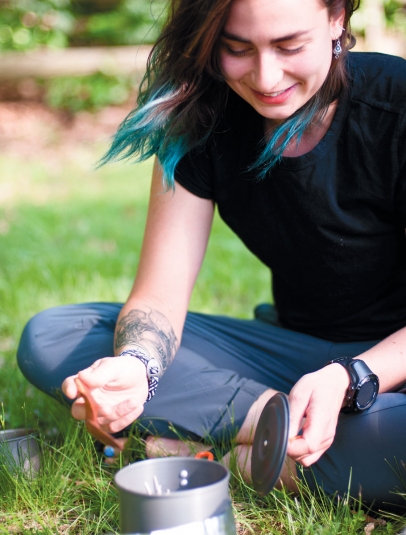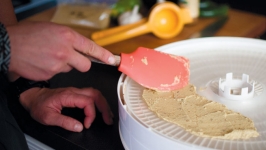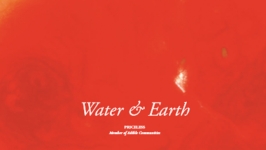What to Eat (and Not Eat) While Long-Distance Hiking for Optimum Health
A Hiker’s Appetite
I’m sitting on a granite peak, watching the waves crash against a distant rocky coast. I drove here on impulse, 15 hours back to Maine. I’m nearly 200 miles from Mount Katahdin, but that doesn’t matter—I’m content to be back, eight months later, in the state where I started my hike on the Appalachian Trail (AT).
Despite finishing the trail nearly four months ago, I find myself running back with the same restlessness that first sent me to it last June. The trail is familiar and novel, brutal and brilliant—a violent roller coaster where the only sure advice is “enjoy the ride.” It was a lifestyle so opposite of my former habits that I knew I could never go back to the way things were. I’d lost the path I wanted to be on, but the AT brought me back.
A passion for hiking is mandatory to walk from Maine to Georgia, but the sublime moments stand out more than the landscape in retrospect. Watching the sun set and rise from McAfee Knob and the shooting stars in between. Eating half a gallon of ice cream at the AT’s midpoint. Sitting beneath a dual-headed shower and watching the warm water and dirt swirl around my feet. After spending so much time going without, the trail’s unexpected moments became overwhelming.
During my thru hike, I subsisted on instant oatmeal, Pop-Tarts, ramen, Great Valu electrolyte powders and anything Little Debbie. Calories and weight took priority over health, and town stops were characterized by rapid intakes of fast food. This meal plan got me through roughly 25 miles a day, but the nutrient deficiency destroyed my body.
“You’re burning an exceptional number of calories,” explains Kristen Arnold, a professional cyclist and dietician, when I talked to her about the best foods for hiking. “But you’re also using all of your bodily systems more than you are normally, so your need for micronutrients, vitamins and minerals is also higher.”
“It is really important to stay hydrated and also maintain iron stores, preferably heme iron, which is from animal protein,” says Kristen. “Nonheme iron from plant sources is also okay, but the hiker would need to have a higher amount to make up for the fact that it is less absorbable.”
Several people I met on the AT dehydrated their meals and sent them in mail drops. By preparing food ahead of time they could incorporate more diverse and nutritious items into their diets.
To stay vegetarian on my next hike, Kristen recommends focusing on whole grains and using quinoa or whole wheat couscous in recipes instead of the standard instant rice. She also advises a supplement or a multivitamin as a fallback. Getting enough protein and iron is easier for those with fewer food restrictions, as they can add a variety of animal sources to their meals.
I plan to consume more legumes on my next hike, especially chickpeas. I frequently sat outside Walmart eating an entire Sabra container and wishing I could justify buying expensive dried hummus on Amazon. Hummus becomes a fine, lightweight powder when dehydrated, making it an excellent sugar-free, protein-rich lunch or snack.
Adjusting to life after the AT is difficult, but coming back to Maine reminded me why I fell in love with this lifestyle and why it’s important to keep planning and preparing. Though most of my friends will be on the Pacific Crest Trail this year, I linked up with a northbound hiker I met in Connecticut and together we’re mapping a route on the Continental Divide Trail (CDT).
Spanning an unfinished 2,600 to 3,100 miles from Canada to Mexico, the CDT is a vastly different trail from the AT and requires more gear and a different mindset. The endless hours researching, training and in the kitchen are a reminder to stay focused on the goal—the CDT. Thru-hiking is about what happens between each terminus but the finish line is what kept us going, with the knowledge that each step on the trail, and every hour spent in the kitchen, will get us closer to that final summit.







